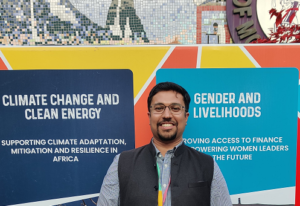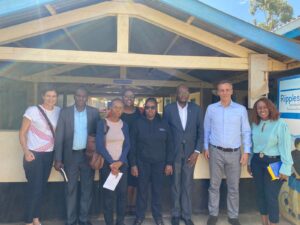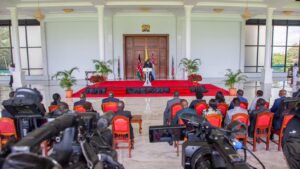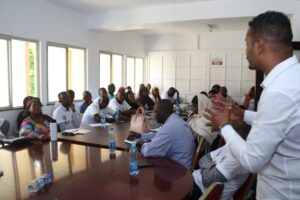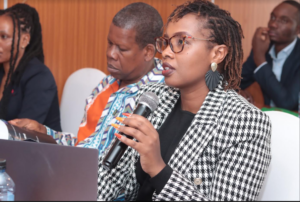Disaster to Opportunity: Harnessing the Power of Flash Floods

The government has been challenged to tap water harvesting during the rainy season to contain flashfloods
Former was the Mandera County Senatorial Candiate Said Adan. alias Shakiti says with the current rains
there is a need to harvest and conserve rain water for future use.
“In the recent week, the sky finally opened up in Kenya, bringing much-needed relief to a country that was suffering from severe drought caused by four seasons of rain failure. As I sit here watching the rain pour down outside my window, I can’t help but feel grateful for every drop that falls. As the rain poured down, it reminded me of nature’s unrelenting power and beauty and the importance of harvesting rainwater.
But with the rain comes new challenges. Flash floods have become all too common in recent weeks. Roads are washed out, homes are flooded, and people are displaced. It’s easy to see the damage caused by these floods, but what if we looked at them as opportunities instead of disasters?
In the midst of the worst drought in recent memory, it’s hard to imagine a world where water is abundant. But what if we could harness the power of flash floods to create sustainable wealth and lessen the burden of drought in the future?
Imagine a world where every drop of rain was captured and used to sustain crops, provide drinking water, and create energy. This is the world we could create if we learn how to tap into the power of flash floods.
Firstly, we could capture and store the water from flash floods in dams and reservoirs. This harvested water could then be used for irrigation, providing a reliable source of water for agriculture even during times of drought. With proper management and planning, farmers could use the water from flash floods to produce more crops and generate sustainable wealth for their communities.
Similarly, there are many other simple and cost-effective ways to collect and store rainwater at the household level. These methods not only provide a reliable source of water during droughts, but can also help mitigate the impacts of flash floods.
One such method is using rain barrels or tanks to collect rainwater from rooftops. This water can then be used for irrigation, washing, and other household needs.
In addition to reducing reliance on unreliable piped water, this method also helps to prevent runoff and soil erosion during heavy rains like the ones we are experiencing in recent days.
Another approach is to use swales or trenches to capture and retain rainwater in the landscape. By strategically directing the flow of water, these structures can help recharge groundwater, prevent erosion, and provide moisture for crops and vegetation during dry periods.
In addition to providing a reliable source of water, rainwater harvesting can also generate economic benefits for communities. For example, with proper treatment and filtration, harvested rainwater can be sold as drinking water or used for irrigation in small-scale agriculture. This can create jobs and improve livelihoods, particularly for women and youth.
Finally, How do we go about tapping into the power of flash floods? It starts with education and awareness. By teaching people about the importance of water conservation and the potential benefits of harvesting rainwater, we can change the way people see flash floods and inspire action. Harvesting rainwater is like planting a garden. You have to prepare the soil, plant the seeds, and give it time to grow. It involves collecting and storing rainwater in a systematic and sustainable manner. You have to identify potential sources of water, design and implement a system that captures and stores it efficiently, and manage it properly to ensure that it lasts through the dry season.
And it’s not just about capturing water during times of excess. We can also implement measures to reduce runoff during heavy rains, such as planting trees and creating green roofs to absorb and retain water.
Lastly, rainwater harvesting is not a panacea for all water problems. It requires a holistic approach that involves addressing the root causes of water scarcity, such as deforestation, land degradation, and climate change. It also requires political will, financial investment, and community participation.
The recent flash floods in Kenya also demonstrate the need for better water management. The floods caused massive destruction, claiming lives, displacing communities, and damaging infrastructure. They serve as a stark reminder that water, although a precious resource, can also be a deadly force of nature.
So, as we celebrate the arrival of the long-awaited rains, let us also reflect on the importance of rainwater harvesting and better water management. Let us work together to build a more resilient and sustainable future, where everyone has access to clean and safe water, regardless of their location or socio-economic status.”

